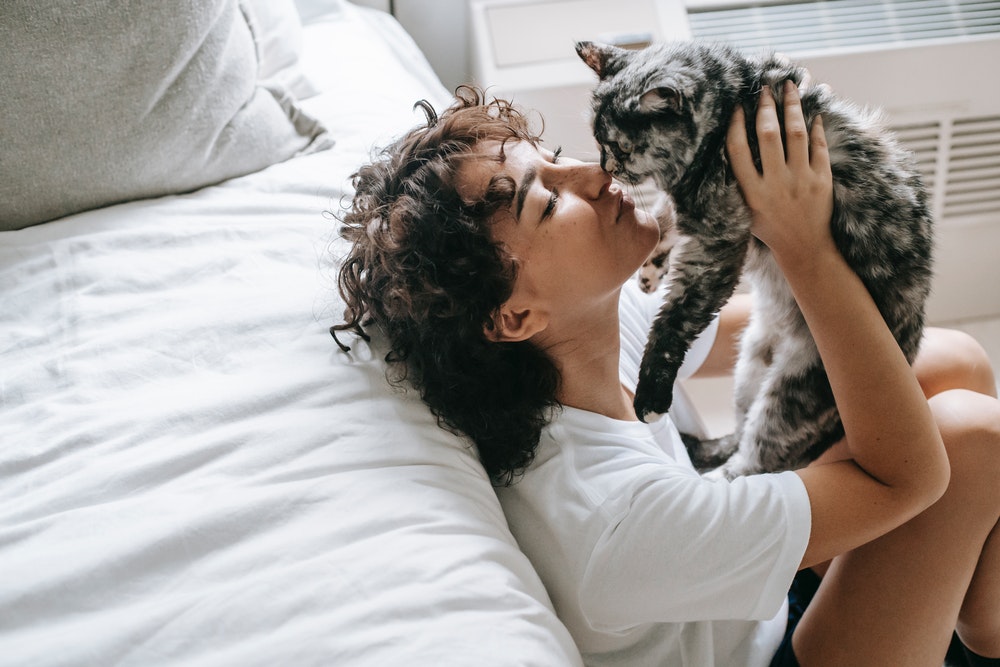
A studio apartment can feel a little cramped even when it’s just one person living alone. While a cat doesn’t take up much room, their care may require more room in your apartment than you think. That doesn’t mean your studio is too small for a cat, but you should take the time to think about how you’ll make space for your four-legged companion.
Buy Smaller Bags of Food
The key to saving space in the kitchenette in your studio apartment is to only buy what you need. In terms of caring for your cat, this means buying smaller bags of dry cat food that can be stored in narrower spaces. A small bag of food can be stored under the sink, on a shelf, or virtually anyplace you have a little extra space. There’s also an advantage in going through smaller bags more quickly. Since the food won’t last as long, there’s a reduced chance the food will get stale or moldy. In that way, you can keep your cat healthier by buying smaller bags. For people who are housebound, smaller bags are also easier to have delivered. Many pet care websites offer delivery on food, treats, and other products, so ordering smaller bags of food can be convenient.
Think About Bathing
Giving your cat a bath under any circumstances can be a challenge, but it’s especially problematic in a studio apartment. The reason for this is that you likely only have a small shower stall. While this doesn’t make it impossible to bathe your cat, you’ll need some extra supplies. You can buy a shower cord with a handheld showerhead. This will make it easier to rinse the cat’s coat as you hold the animal in one arm or set them on the floor in the stall. In addition to bathing your cat once a month, you should brush their coat on a daily basis and watch for overgrown claws.
Cat-Proof Your Apartment
Your cat is going to want to run around, play, climb, and sharpen its claws. Unless you want them to destroy everything in your tiny apartment, you should rethink your decorating choices. Switch to blinds instead of curtains, and keep a scratching post near your sofa. You can also create fun things for your cat to do by adding hammocks, crates, and other things that your cat can climb onto during play. Make sure charging cables, electrical cords, and cosmetics are kept out of reach to protect against your cat causing damage or harming themselves.
Litter Box Placement is Crucial
You won’t have many options for the placement of your litter box, so you might decide the bathroom is the best place for it. Fortunately, you can buy a modern cat litter box that’s designed to limit the odor that’s created from the cat’s use of the box. You’ll also find that newer models are designed for easy cleaning, so emptying the box won’t be the chore that you might expect. You can also limit the odor by choosing a better brand of litter. There are many options on the market today. Don’t be afraid to experiment with different brands until you find one that works the best for your confined living space.
Provide Plenty of Exercises
Your cat is going to get bored if you don’t spend some time with them each day. You can help them get exercise with a simple string or a tethered ball. Play with your cat as you watch television or talk on the phone. Even if your cat is an indoor pet, you should take them for a walk once a day. You can buy a harness to fit your cat and take them for walks in much the same way that you would walk a dog. This will help you and your cat gets some fresh air and exercises each day. When you return home, be sure your cat has a full bowl of water to help them stay hydrated.
It may take some time for you and your cat to adjust to living with one another, but you can make it work. When you dedicate more time to training your cat and creating a happier environment for both of you, that studio apartment won’t seem so small. As you bond with your pet, you’ll wonder how you ever managed without a cat in your life.


